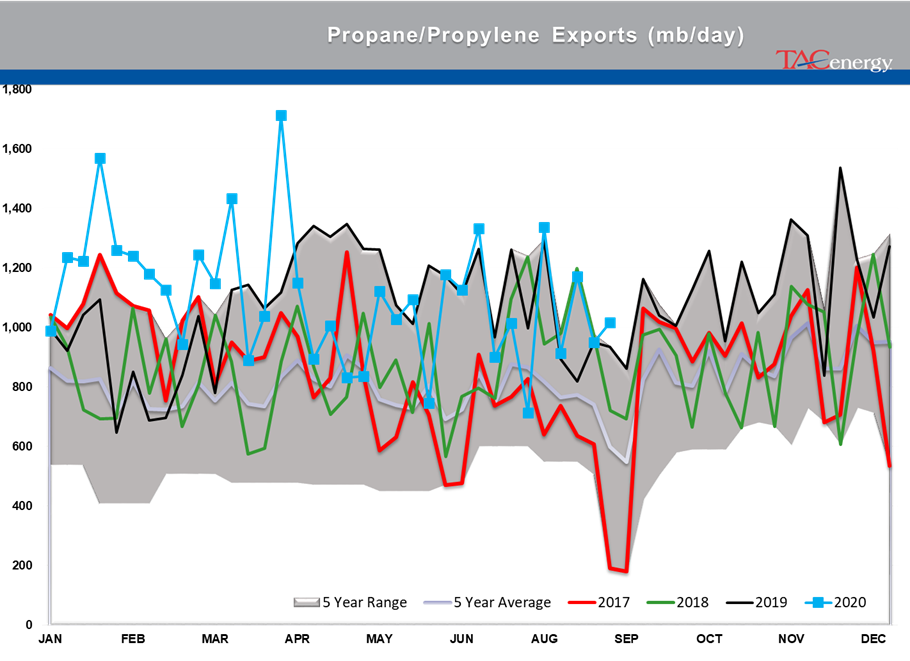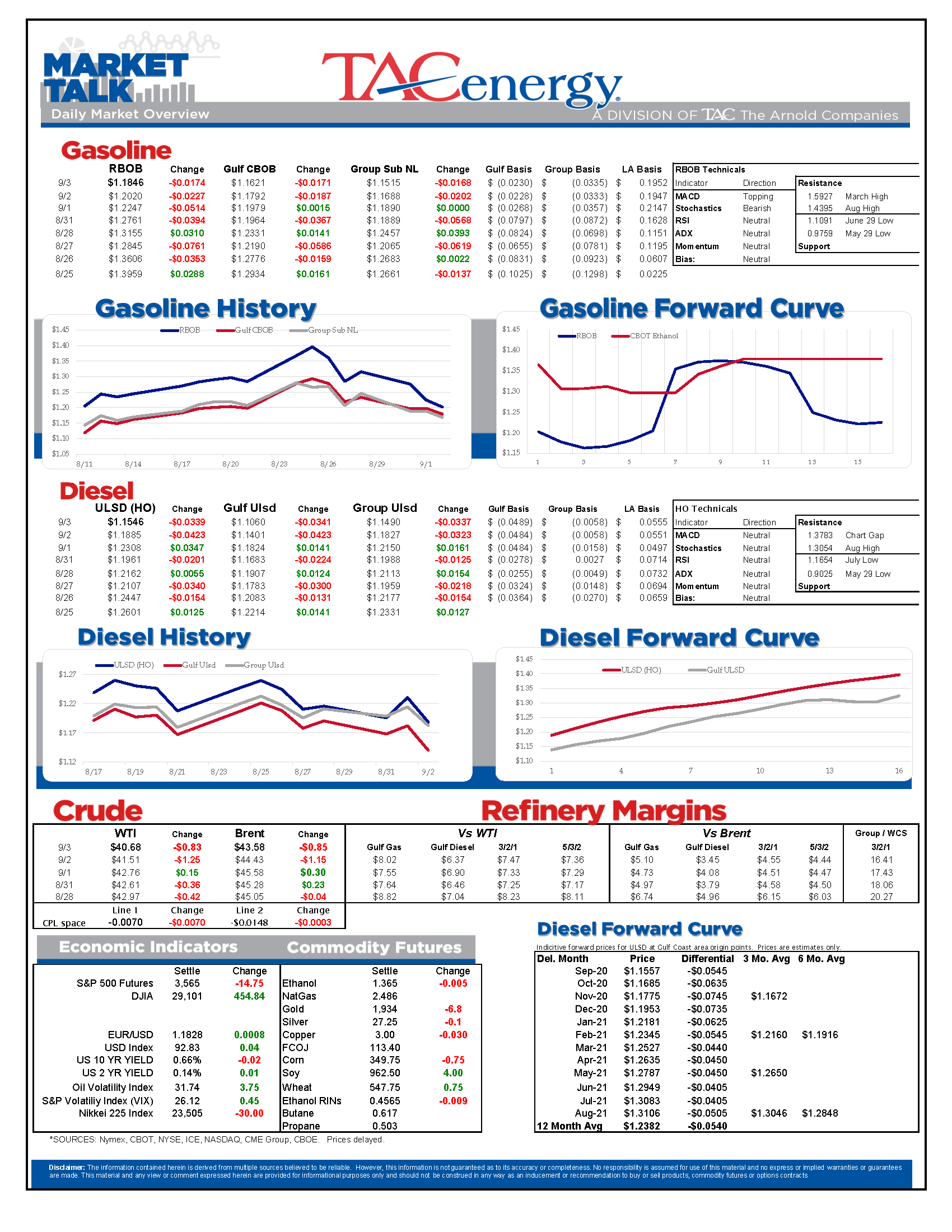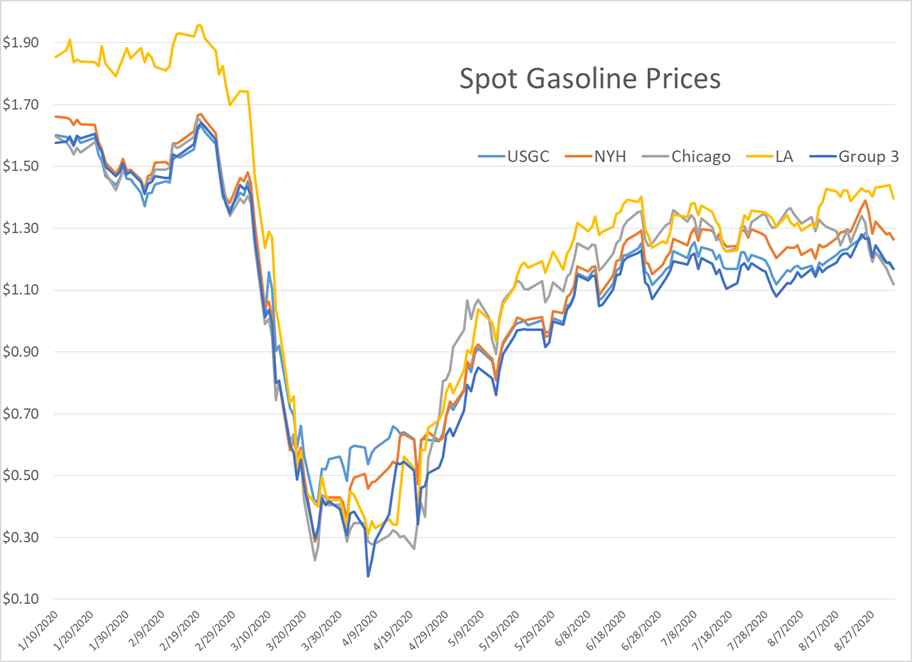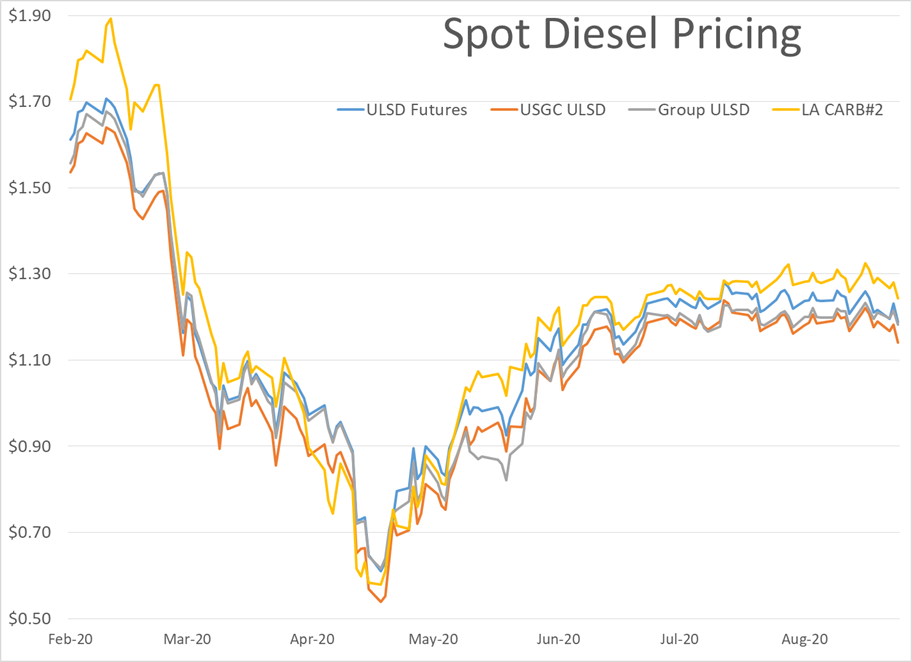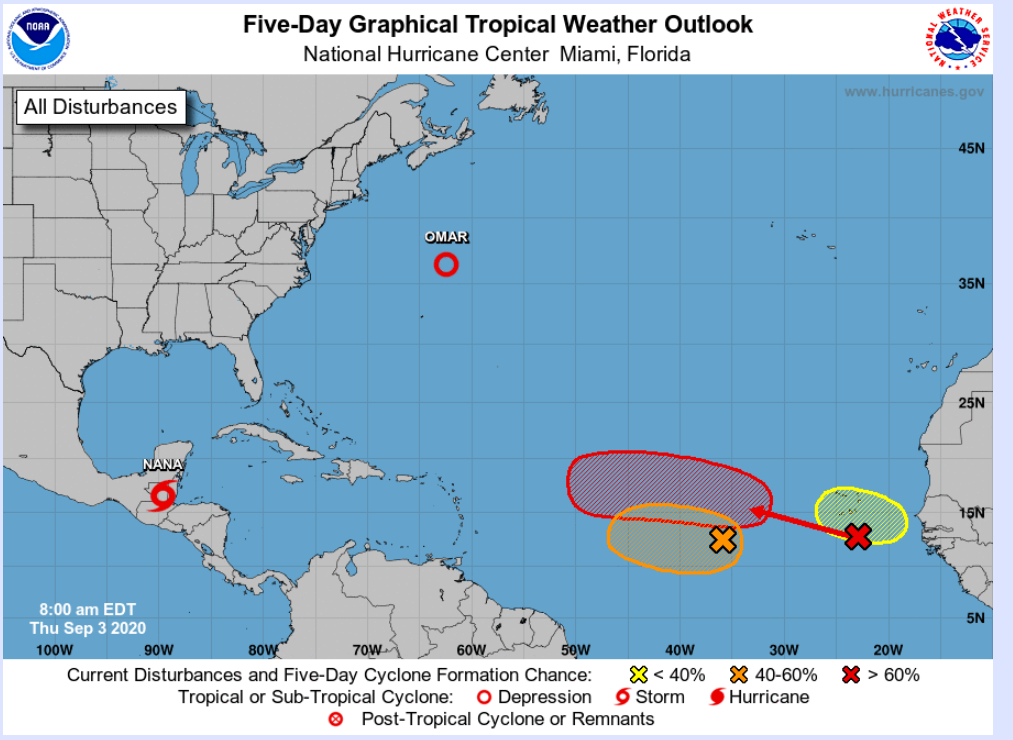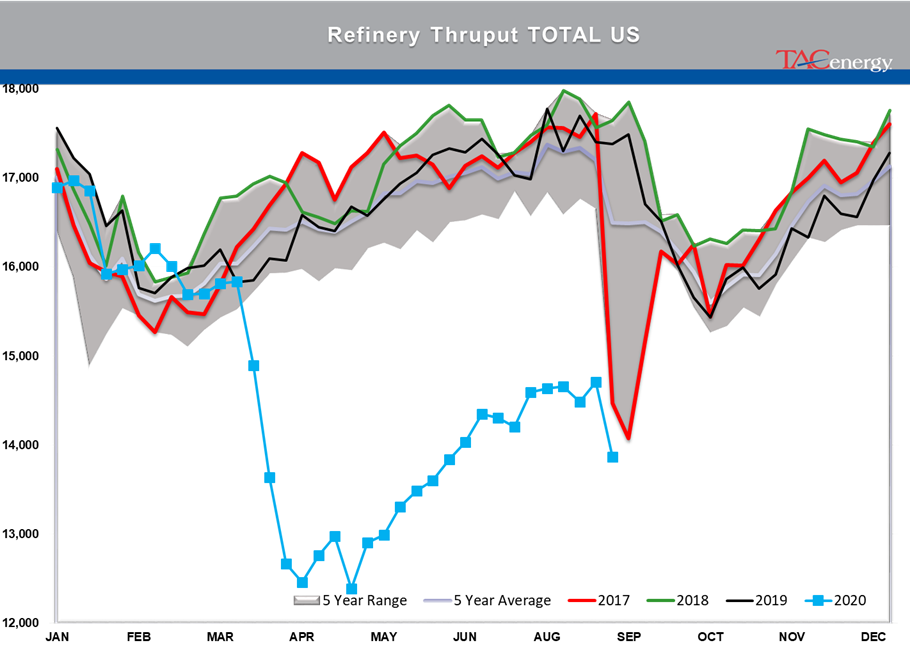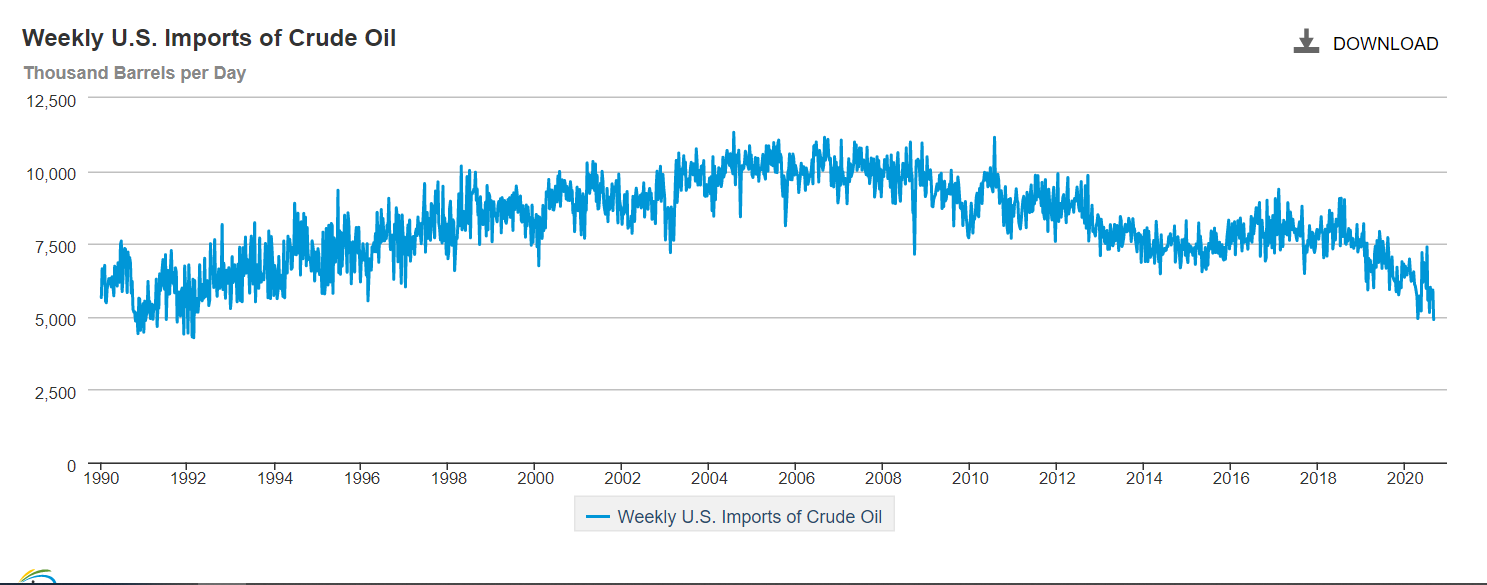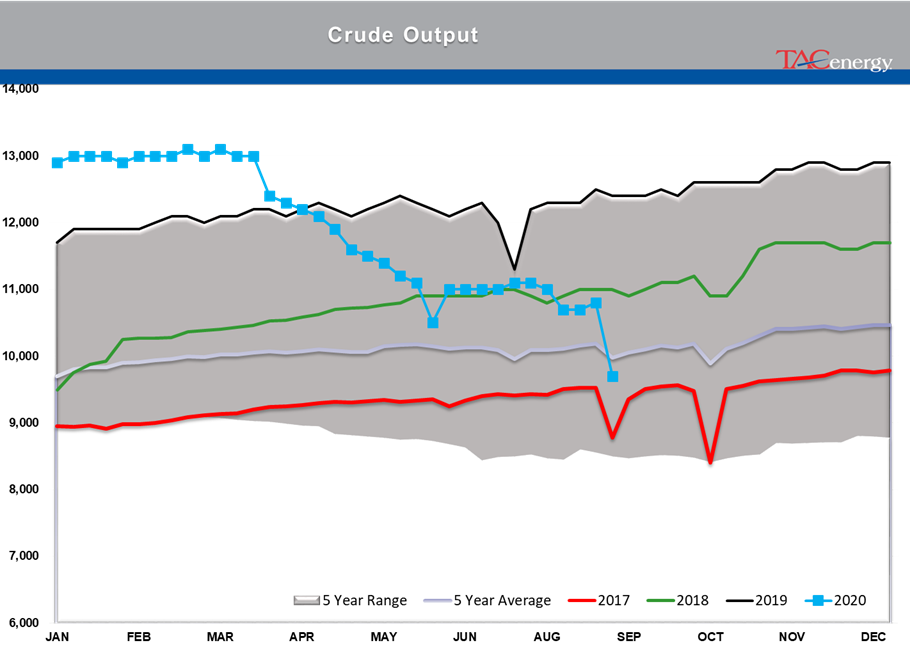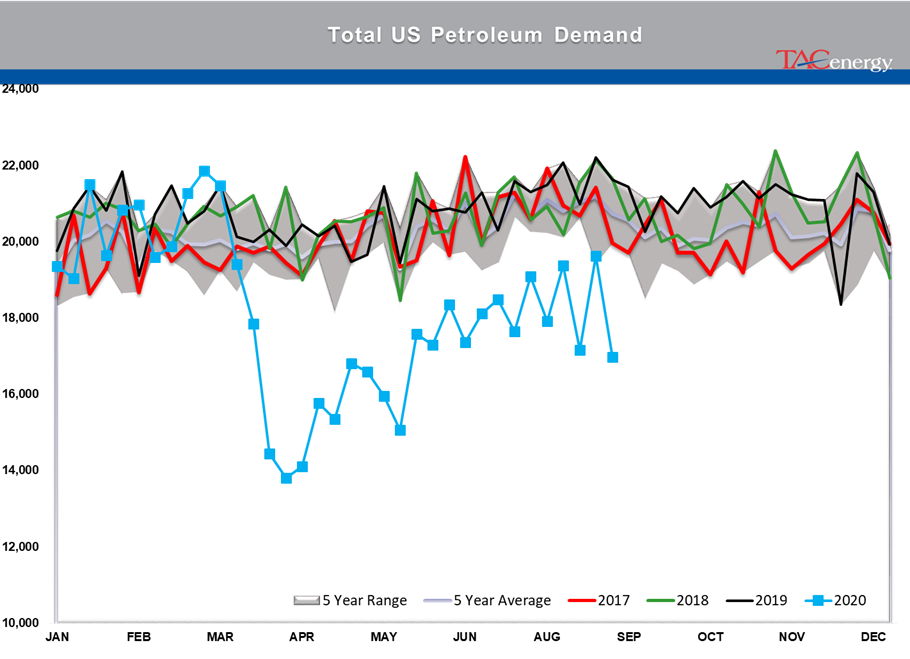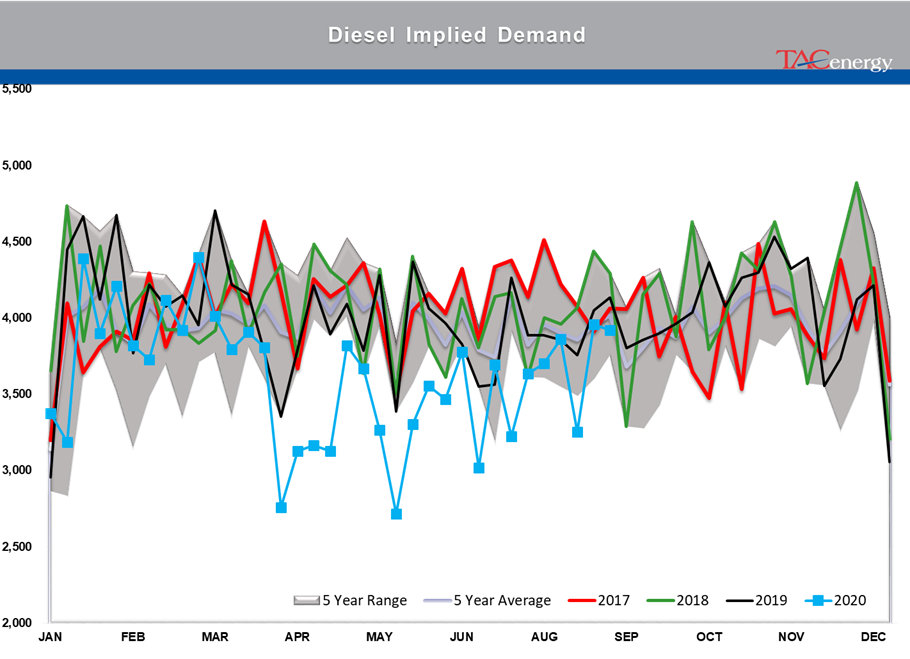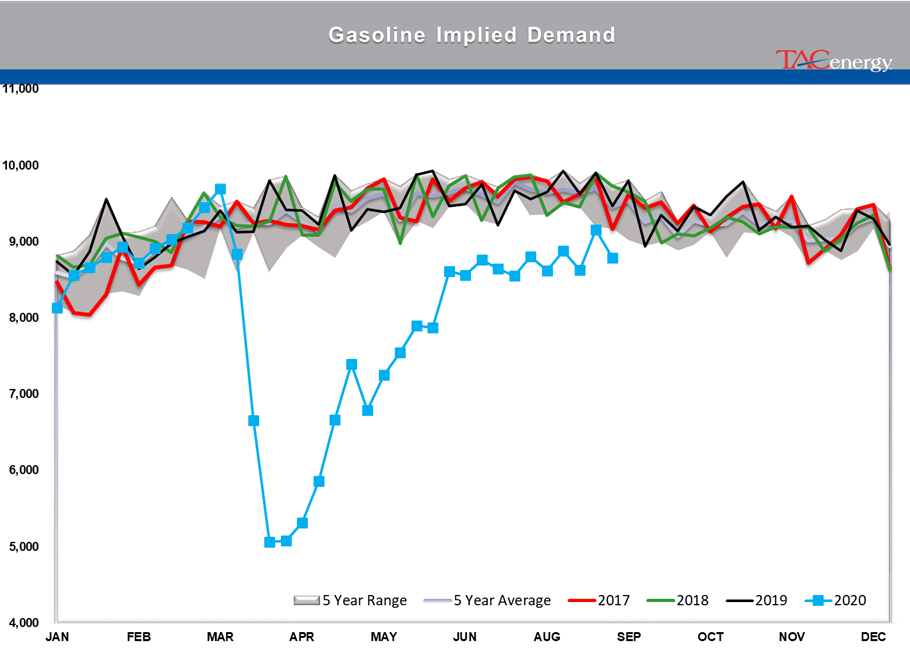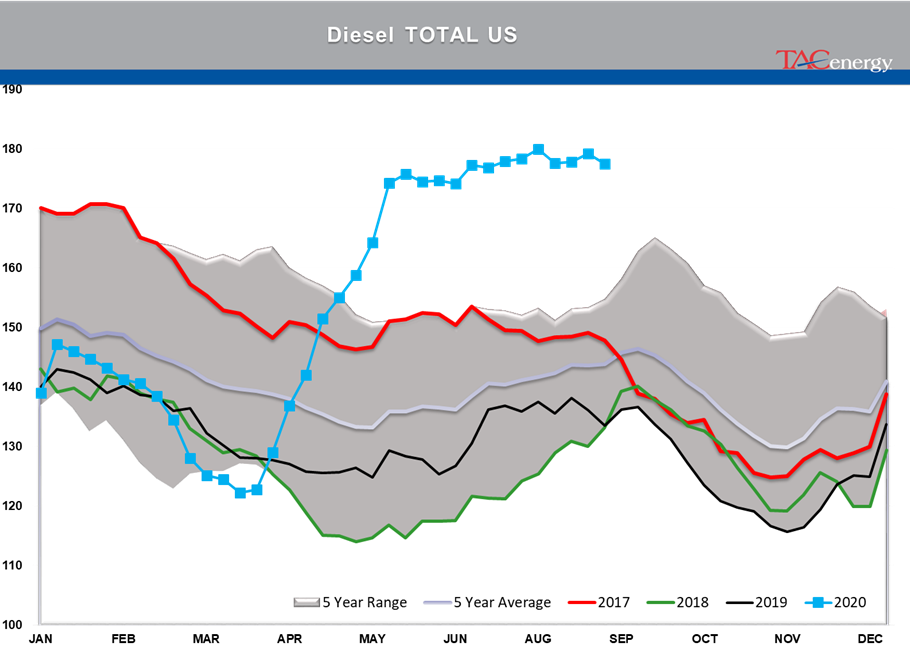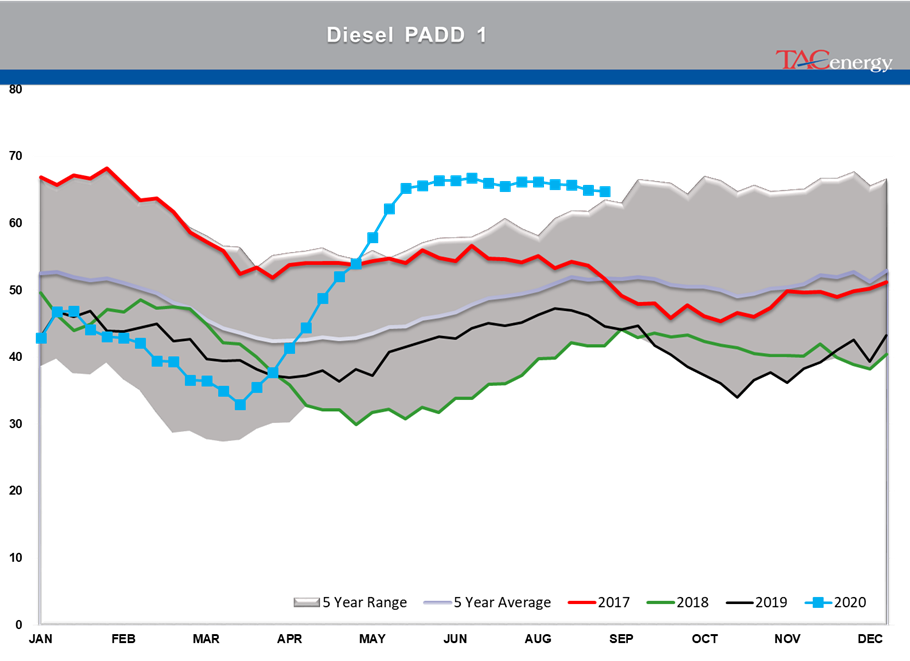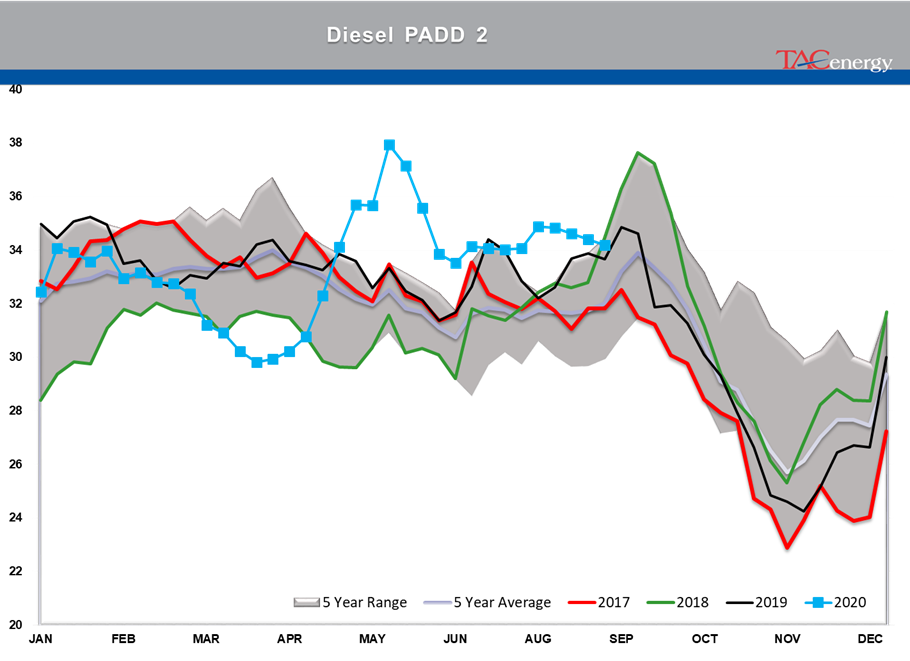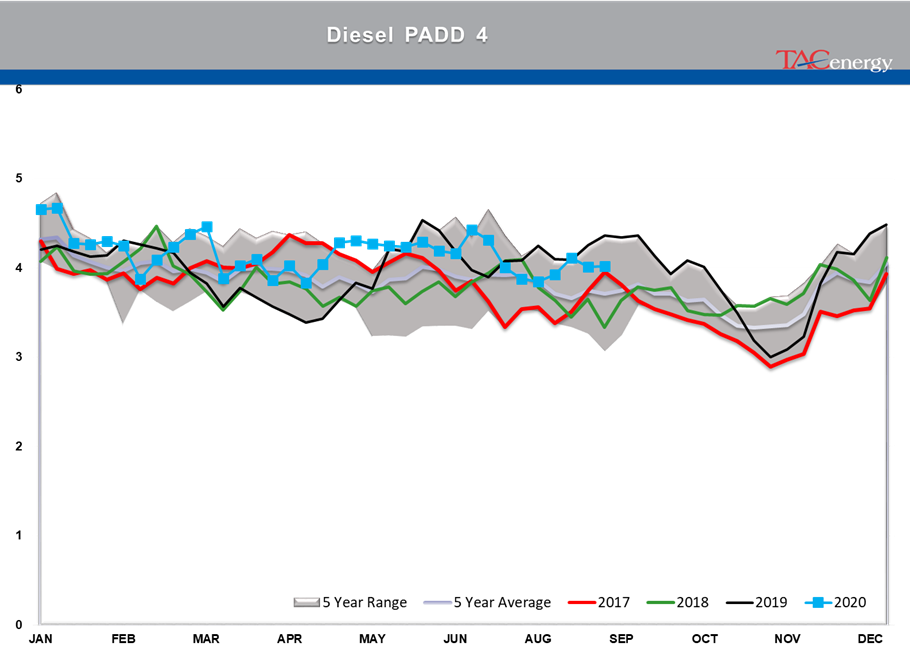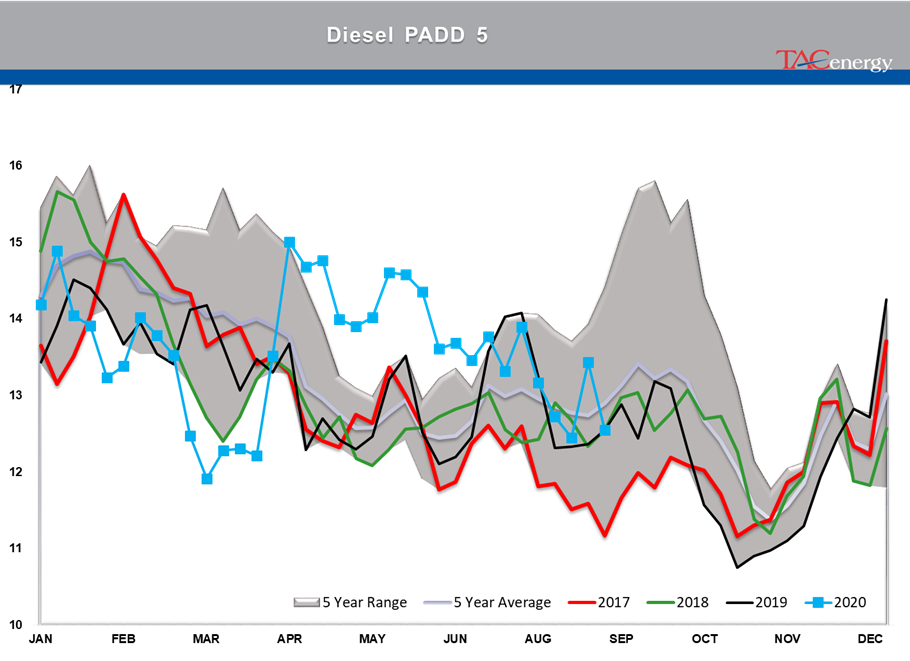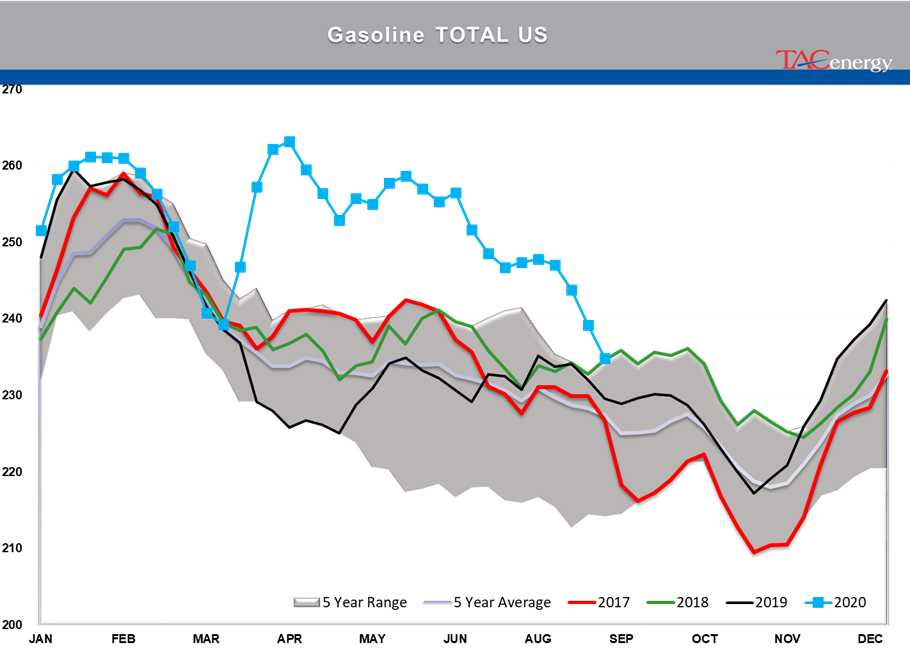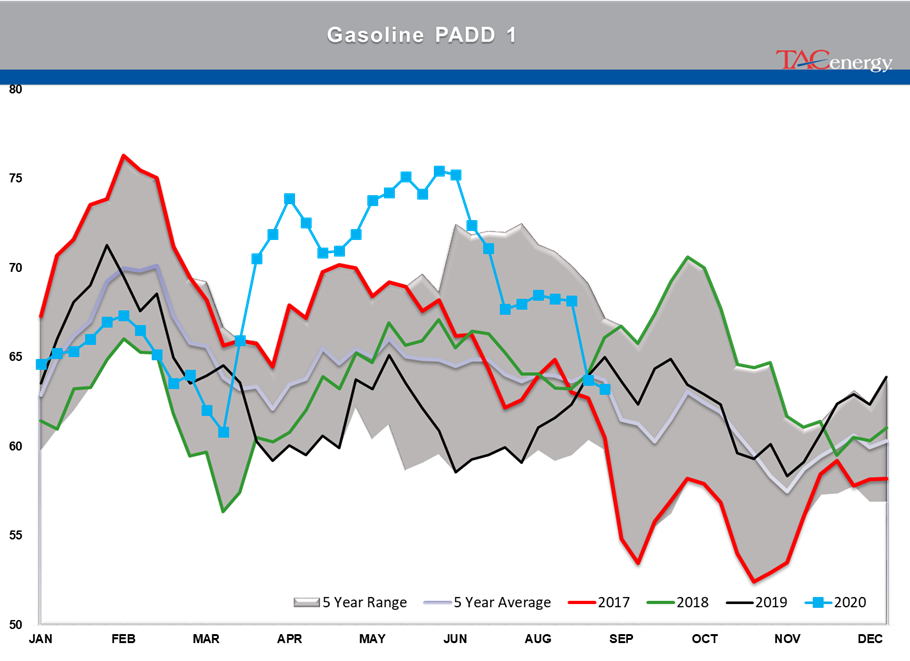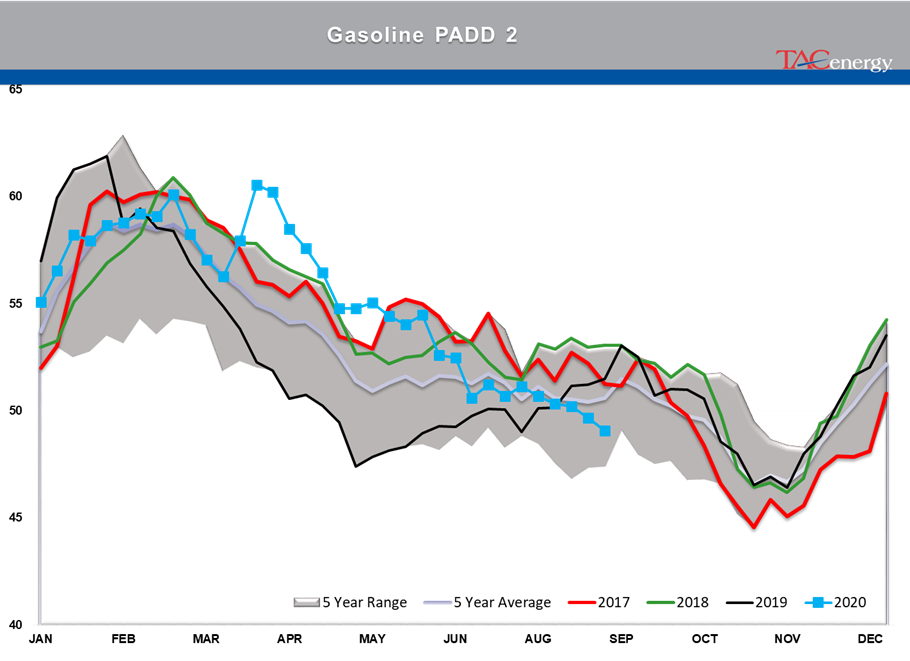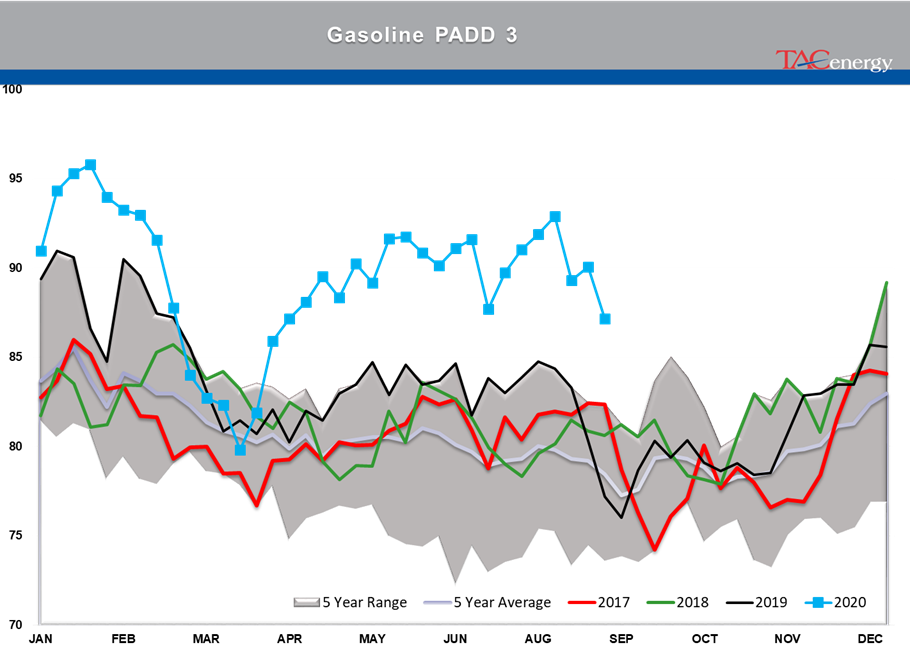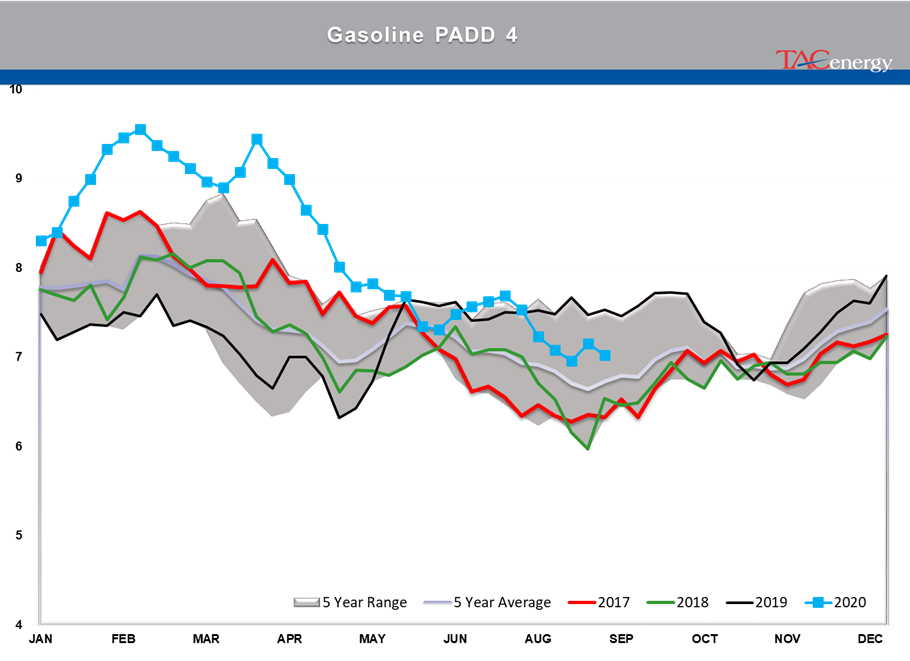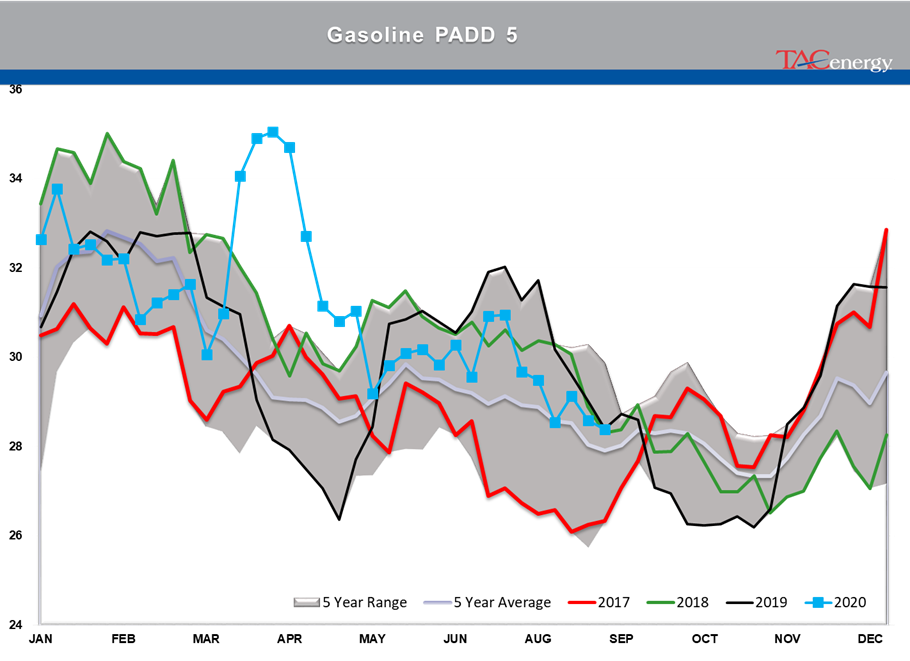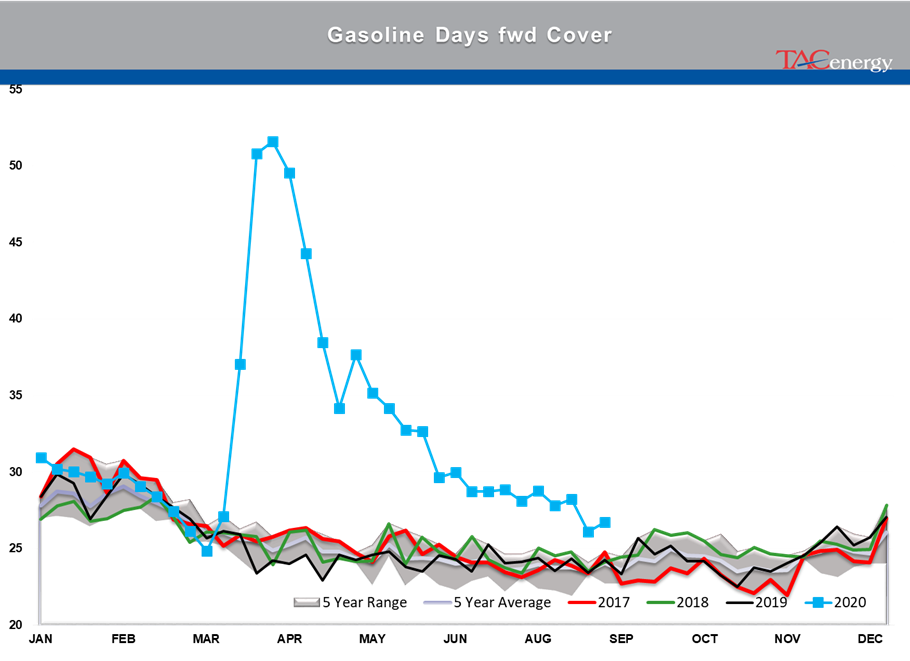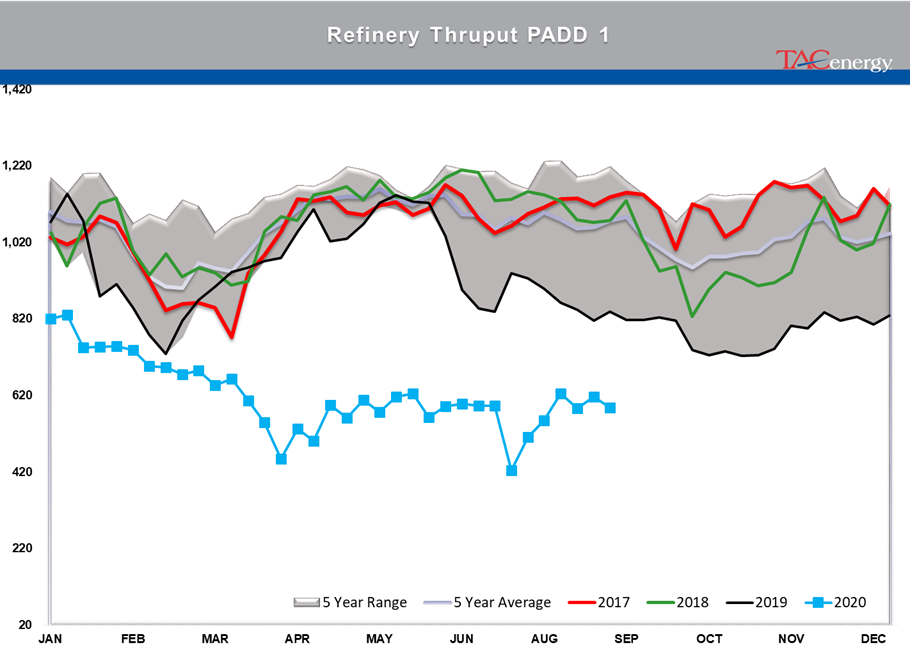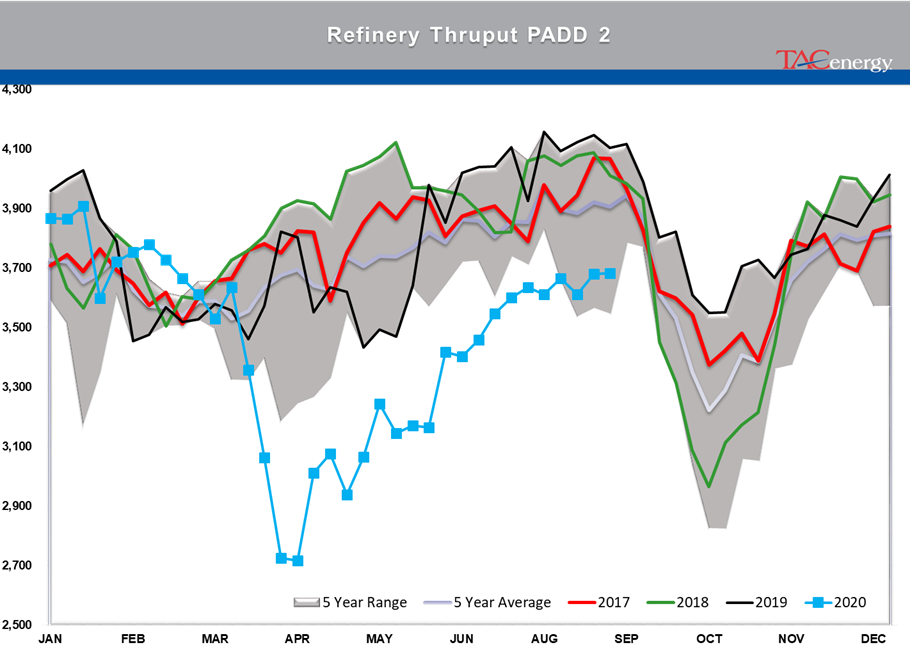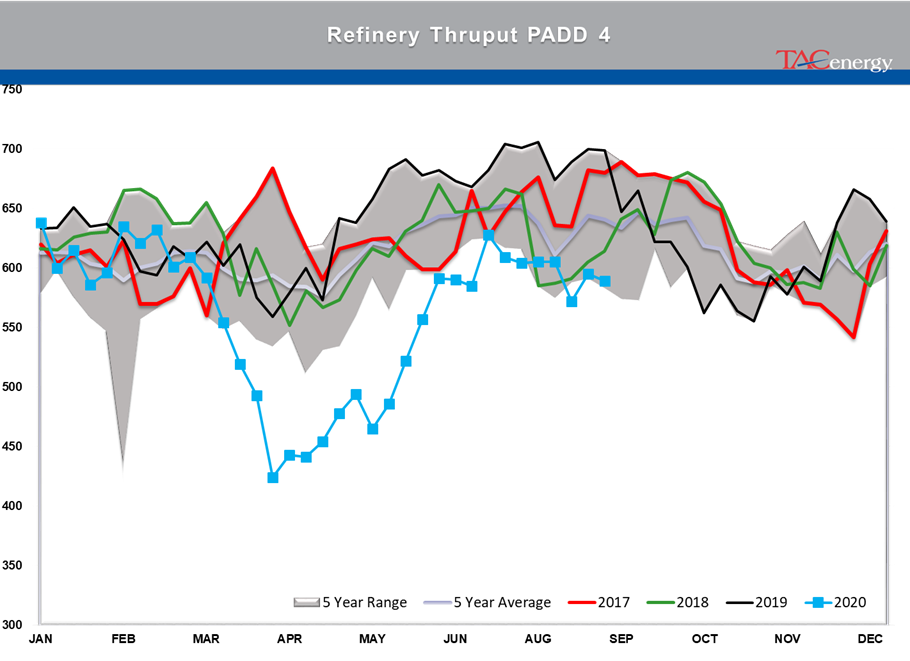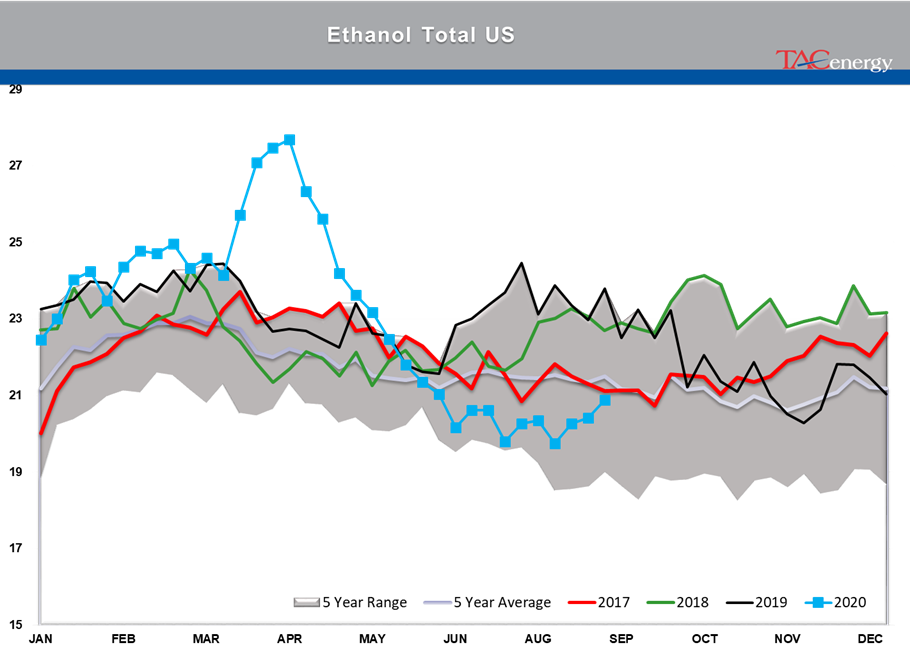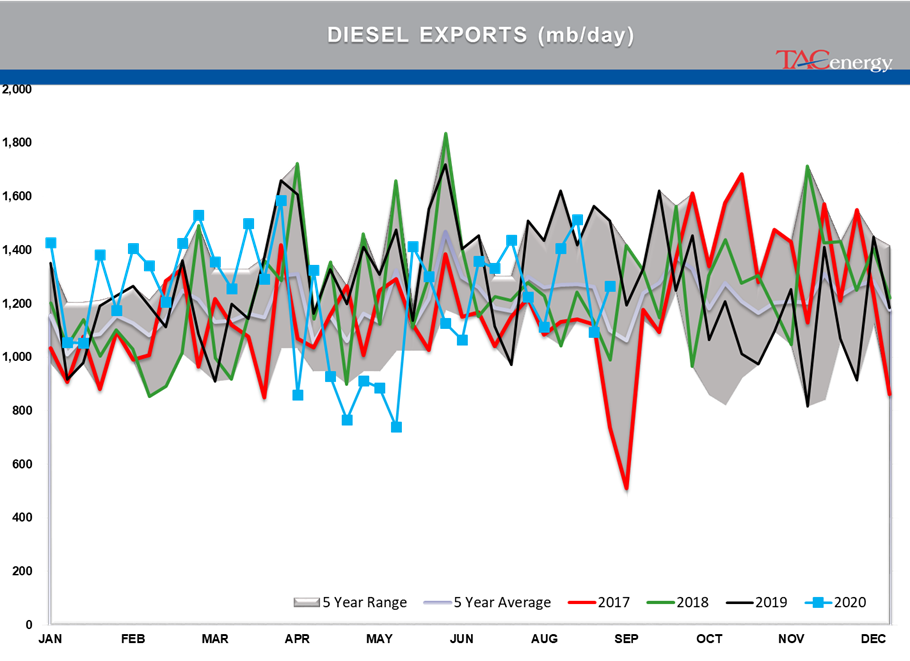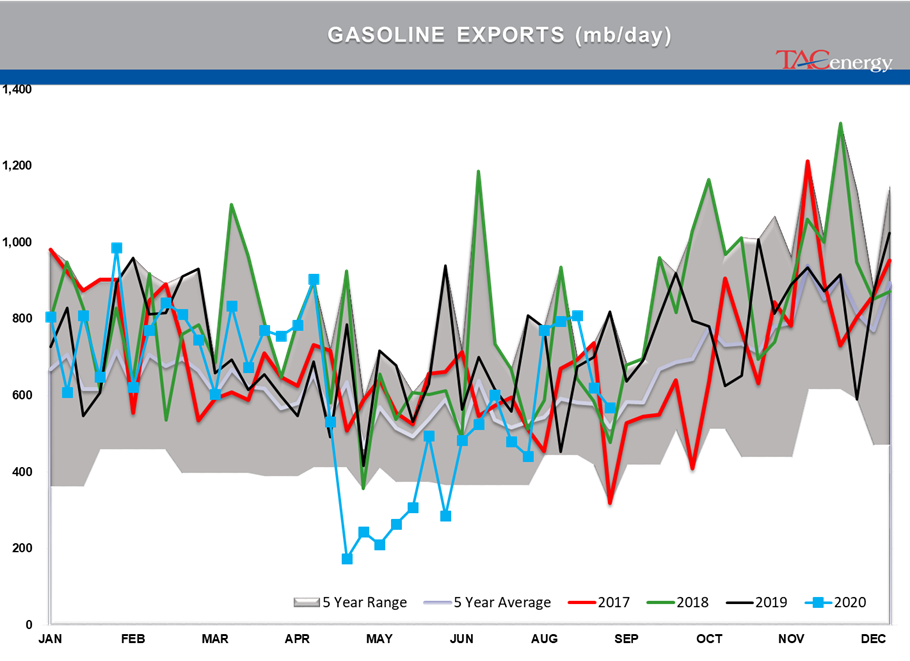Is A Collapse Imminent?

Just a few days after pushing six month highs, energy futures are hitting multi-month lows this morning, and threatening a technical breakdown that could bring product prices back below one dollar/gallon. A rising dollar, softer equities and concerns for fall demand all taking credit for the early selling. While the drop has been significant – gasoline prices in some markets are down more than 20 cents in a week - we have seen multiple similar moves this summer only to bounce each time technical support gets tested, so it’s still too soon to say a collapse is imminent.
The disruptions to the energy operations along the Gulf Coast from Hurricane Laura are easy to see in the DOE charts below, but you’ll also notice how most operational issues pale in comparison to what we saw from Harvey in 2017, which provides some insight into why the industry had a huge sigh of relief when the storm shifted east.
Oil imports reached their lowest level in 28 years as ships stayed out to sea to ride out the storm, crude oil output dropped by more than 10 percent to its lowest in three years, as Gulf of Mexico platforms were shuttered temporarily and refinery runs dropped by one million barrels per day. This all added up to substantial inventory draws. The fact that most of these operations are already returning to normal within one week after landfall helps explain why the market sold off following the report, as concerns quickly shifted to issues with demand rather than a threat to supply.
The exception to that rule is the refinery output number. Early reports suggest it could be several weeks before the two Lake Charles area facilities operating before the storm might be able to attempt a restart, and with the fall turnaround season about to kick off, we could see more declines in run rates over the next several weeks.
In addition to the storm-related issues, demand and margins aren’t encouraging a resurgence in refinery runs either. The weekly estimate from the DOE showed total U.S. petroleum demand dropping to a 13 week low, and the flush in product prices this week has crack spreads pushing multi-year lows. A WSJ article this morning suggests that European refiners are most likely to see the next wave of closures and conversions as the industry deals with a glut of refining capacity, while U.S. facilities will benefit from their outlets to central and south America.
Speaking of central America, Hurricane Nana made landfall in Belize overnight, while Omar continues tracking out to sea. There are three more potential systems being tracked by the NHC, one of which has 70 percent odds of further development, making it likely we’ll see Paulette named just in time to hit the peak of the season.
Click here to download a PDF of today's TACenergy Market Talk.
Latest Posts
Week 17 - US DOE Inventory Recap
The Energy Complex Is Trading Modestly Lower So Far This Morning With WTI Crude Oil Futures Leading The Way
Energy Futures Are Drifting Quietly Higher This Morning
Refined Products Holding Close To Break Even While Oil Prices Are Losing Just Under 1%
Social Media
News & Views
View All
Week 17 - US DOE Inventory Recap

The Energy Complex Is Trading Modestly Lower So Far This Morning With WTI Crude Oil Futures Leading The Way
The energy complex is trading modestly lower so far this morning with WTI crude oil futures leading the way, exchanging hands $1.50 per barrel lower (-1.9%) than Tuesday’s settlement price. Gasoline and diesel futures are following suit, dropping .0390 and .0280 per gallon, respectively.
A surprise crude oil build (one that doesn’t include any changes to the SPR) as reported by the American Petroleum Institute late Tuesday is taking credit for the bearish trading seen this morning. The Institute estimated an increase in crude inventories of ~5 million barrels and drop in both refined product stocks of 1.5-2.2 million barrels for the week ending April 26. The Department of Energy’s official report is due out at it’s regular time (9:30 CDT) this morning.
The Senate Budget Committee is scheduled to hold a hearing at 9:00 AM EST this morning regarding a years-long probe into climate change messaging from big oil companies. Following a 3-year investigation, Senate and House Democrats released their final report yesterday alleging major oil companies have internally recognized the impacts of fossil fuels on the climate since as far back as the 1960s, while privately lobbying against climate legislation and publicly presenting a narrative that undermines a connection between the two. Whether this will have a tangible effect on policy or is just the latest announcement in an election-yeardeluge is yet to be seen.
Speaking of deluge, another drone attack was launched against Russian infrastructure earlier this morning, causing an explosion and subsequent fire at Rosneft’s Ryazan refinery. While likely a response to the five killed from Russian missile strikes in Odesa and Kharkiv, Kyiv has yet to officially claim responsibility for the attack that successfully struck state infrastructure just 130 miles from Moscow.
The crude oil bears are on a tear this past week, blowing past WTI’s 5 and 10 day moving averages on Monday and opening below it’s 50-day MA this morning. The $80 level is likely a key resistance level, below which the path is open for the American oil benchmark to drop to the $75 level in short order.
Click here to download a PDF of today's TACenergy Market Talk.

Energy Futures Are Drifting Quietly Higher This Morning
Energy futures are drifting quietly higher this morning as a new round of hostage negotiations between Israel and Hamas seem to show relative promise. It seems the market is focusing on the prospect of cooler heads prevailing, rather than the pervasive rocket/drone exchanges, the latest of which took place over Israel’s northern border.
A warmer-than-expected winter depressed diesel demand and, likewise, distillate refinery margins, which has dropped to its lowest level since the beginning of 2022. The ULSD forward curve has shifted into contango (carry) over the past month as traders seek to store their diesel inventories and hope for a pickup in demand, domestic or otherwise.
The DOE announced it had continued rebuilding it’s Strategic Petroleum Reserve this month, noting the addition of 2.3 million barrels of crude so far in April. Depending on what the private sector reported for last week, Wednesday’s DOE report may put current national crude oil inventories (include those of the SPR) above the year’s previous levels, something we haven’t seen since April of 2022, two months after Ukraine war began.
The latest in the Dangote Refinery Saga: Credit stall-out, rising oil prices, and currency exchange.
Click here to download a PDF of today's TACenergy Market Talk.
